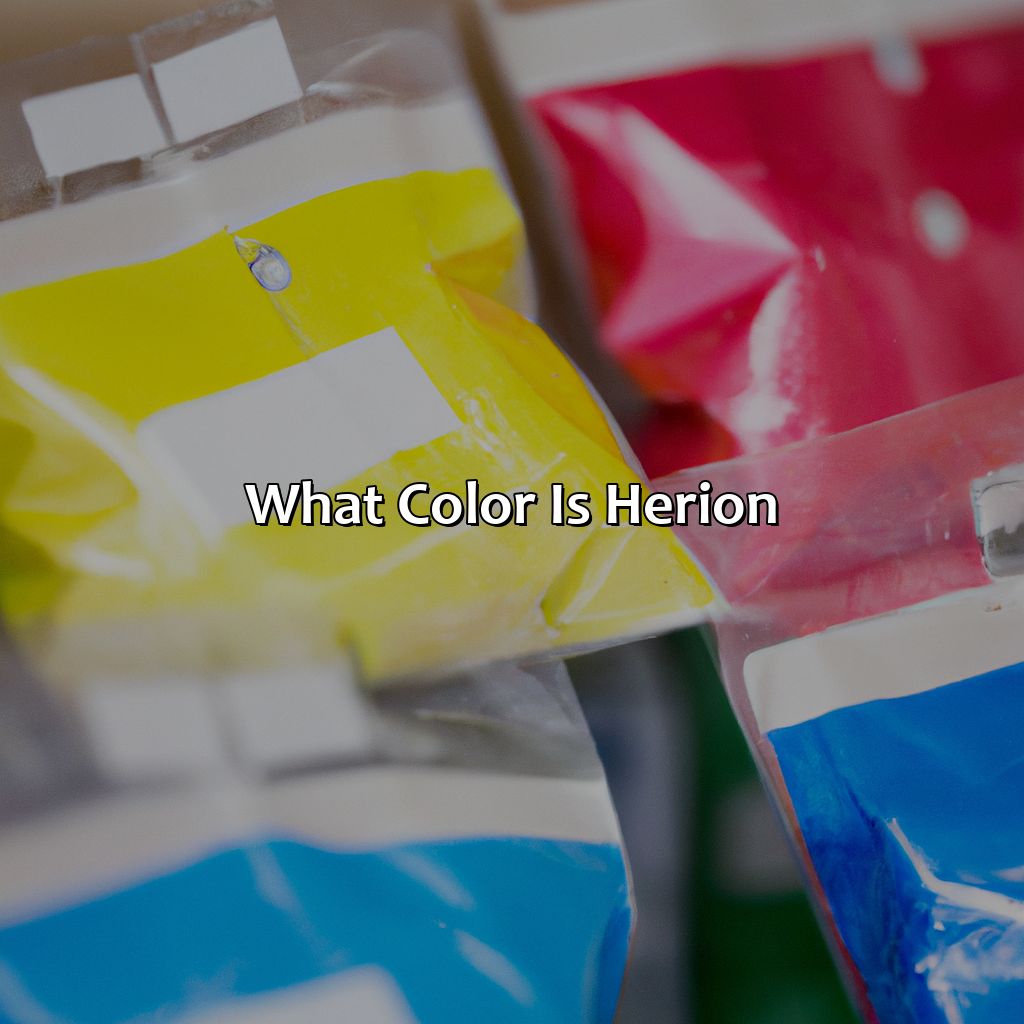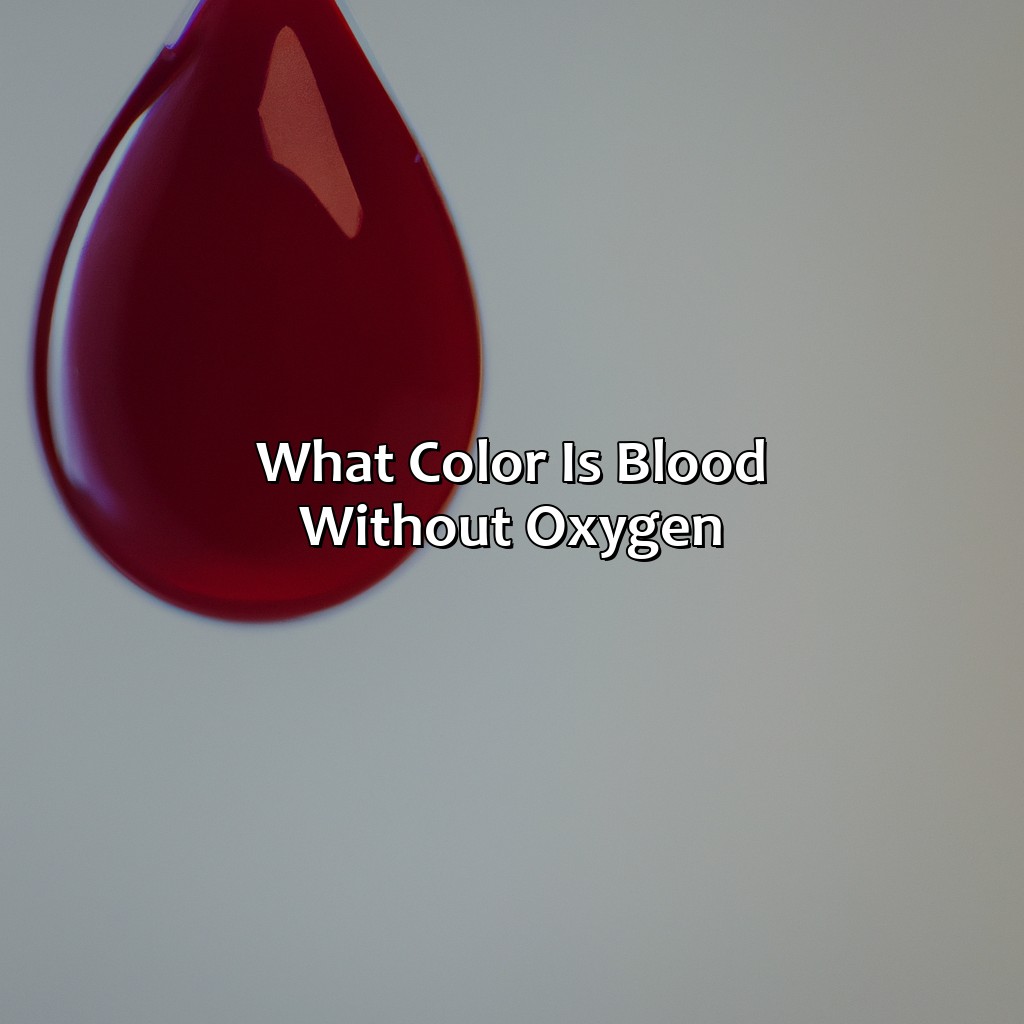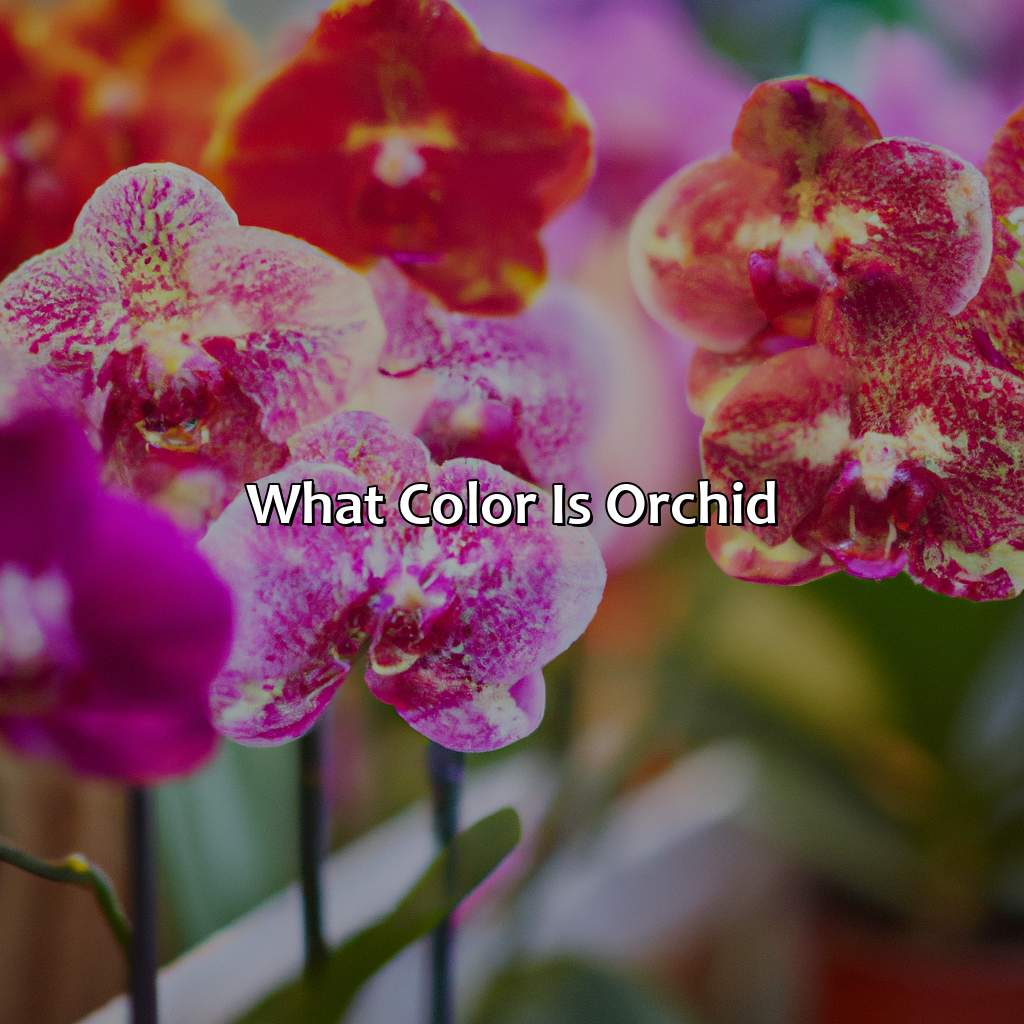Key Takeaway:
- Aquamarine is a gemstone that is typically light blue-green or pale turquoise in color, with variations in shade and hue including ocean, seafoam, and reef blue.
- Aquamarine has spiritual and metaphysical properties, including promoting peaceful energy and chakra healing.
- Aquamarine has been used throughout history as jewelry, including notable uses such as engagement rings. It continues to be popular in contemporary jewelry and fashion for its ocean-inspired colors and serene energy.
What is Aquamarine?
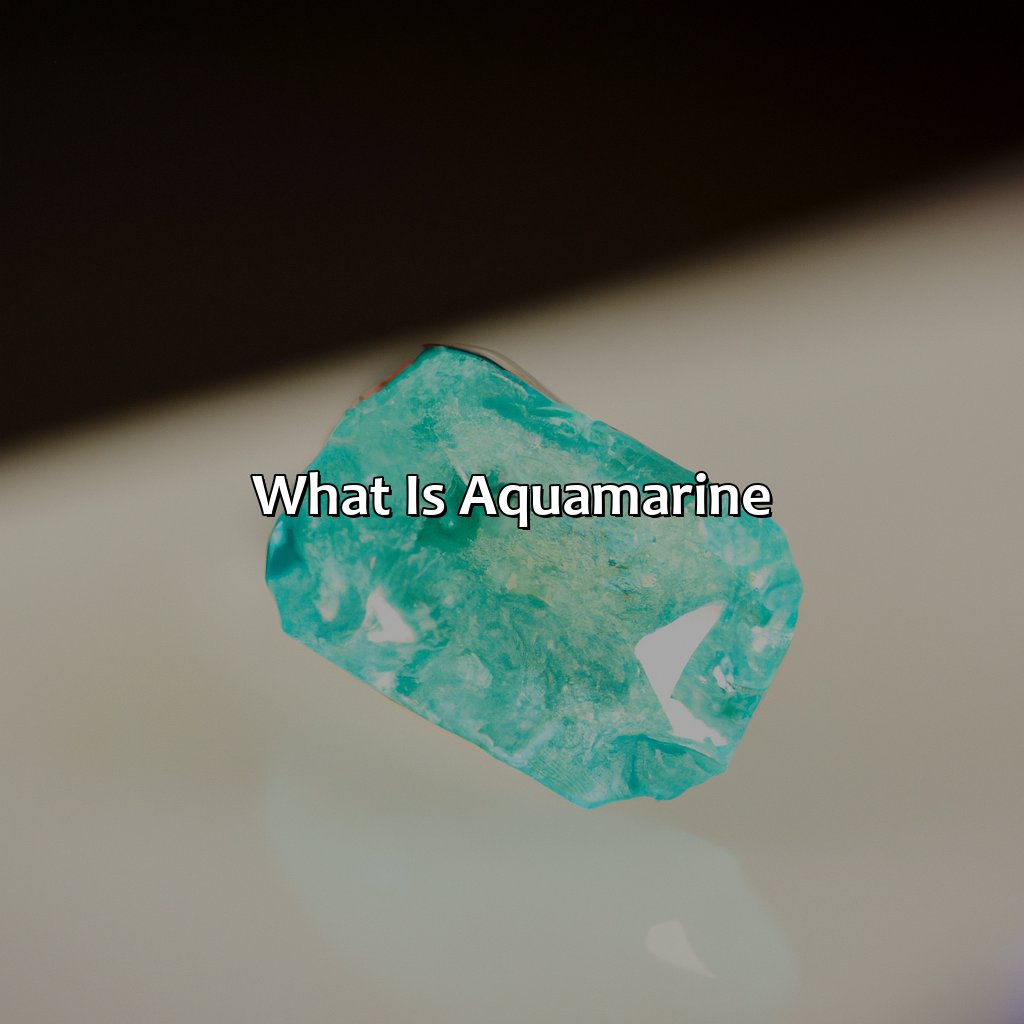
Photo Credits: colorscombo.com by Brandon Sanchez
Gain insight into aquamarine by exploring its definition, origin and physical properties.
Discover its rich history and the physical characteristics that make it special.
First, learn about its definition and origin.
Then, dive into its mineral properties, hardness and clarity.
These features contribute to its beauty and worth.
Definition and origins
Aquamarine is a gemstone with a rich and captivating history, known for its brilliant blue-green color and soothing energy. The term “aquamarine” comes from the Latin words “aqua” meaning water, and “mare” meaning sea, referencing the stone’s aquatic hues. Its exact origins are not fully understood but it was used in jewelry by ancient Egyptians, Greeks, and Romans. It is a variety of the mineral beryl and has a unique crystal structure that allows light to be refracted in a way that gives it its signature brilliance and depth.
This gemstone has been valued for centuries for both its beauty and its believed spiritual and metaphysical properties. In folklore, aquamarine was thought to protect sailors on long voyages and was said to bring good luck to those who wore or carried it. Throughout history, this gemstone has been associated with courage, tranquility, clarity of thought, and enhanced intuition. It has also held religious significance for many cultures throughout time.
The color of aquamarine can vary from pale blue-green to deep turquoise. Variations in shade depend on factors such as iron content, lighting conditions, and location of the crystal’s origin. This gemstone’s colors are often compared to the serene blues found in tropical oceans. The stone’s luster adds extra attractiveness.
Aquamarine has been harvested from various regions throughout history including Brazil’s Minas Gerais region; Pakistan; Africa; Siberia; Sri Lanka; Colorado (USA) among other places throughout South America as well as parts of Asia.
Over time this valuable stone maintained status as one of the most popular colored gemstones worldwide. Nowadays it is commonly used as an accessory alongside fashion garments or high-quality diamond settings but previously had uses that were more medicinal such as pain relief.
In terms of rarity, Aquamarine is relatively common compared to highly-prized gems like diamonds or emeralds but it can still be quite expensive based on its quality. The stone’s value varies greatly depending on characteristics like color, size, and clarity.
Caring for Aquamarine is simple with basic steps to keep the gem in a good state of preservation. Recommendations include gentle cleaning using mild soap and water, avoiding harsh chemical cleaners, storing it properly when not in use to preserve the stone’s brilliance.
Overall, aquamarine has held significant historical relevance throughout time due to its unique attributes and pleasing aesthetic qualities, making it a popular choice in fashion circles today.
Why settle for diamonds or gold when you can have a gemstone with mineral properties, impressive hardness, and stunning clarity like aquamarine?
Physical properties
Aquamarine possesses distinct mineral properties which distinguish it from other gemstones. Its hardness scale is at 7.5 to 8, making it a durable gemstone for everyday wear. In terms of clarity, this gemstone can contain eye-visible inclusions or streaks that can affect its overall value.
Below is a table that details the physical properties of aquamarine:
| Physical Property | Detail |
|---|---|
| Mineral Class | Beryl family |
| Crystal System | Hexagonal |
| Mohs Hardness Scale | 7.5 to 8 |
| Refraction Index | 1.577 – 1.583 |
| Specific Gravity | 2.76 – 2.80 |
It should be noted that aquamarine has a unique feature called pleochroism, meaning its color changes according to angles viewed from light sources and surroundings.
In caring for aquamarine, it’s important to protect it from rough surfaces and chemicals that could damage its delicate surface and structure, which can affect its mineral properties like hardness and clarity. It is advisable to use warm soapy water instead of harsh cleaning agents to clean the stone.
To retain the gemstone’s beauty, it is also suggested storing away aquamarines separately from other jewelry pieces as they may scratch the surface or wear down their luster over time due to constant rubbing or metal contact.
Overall, understanding aquamarine’s unique mineral properties such as its hardness and clarity helps in caring for such an exquisite and elegant stone that has been beloved by many cultures throughout history.
Prepare to dive into the depths of aquamarine’s meaning, from spiritual properties to cultural symbolism.
The Meaning of Aquamarine
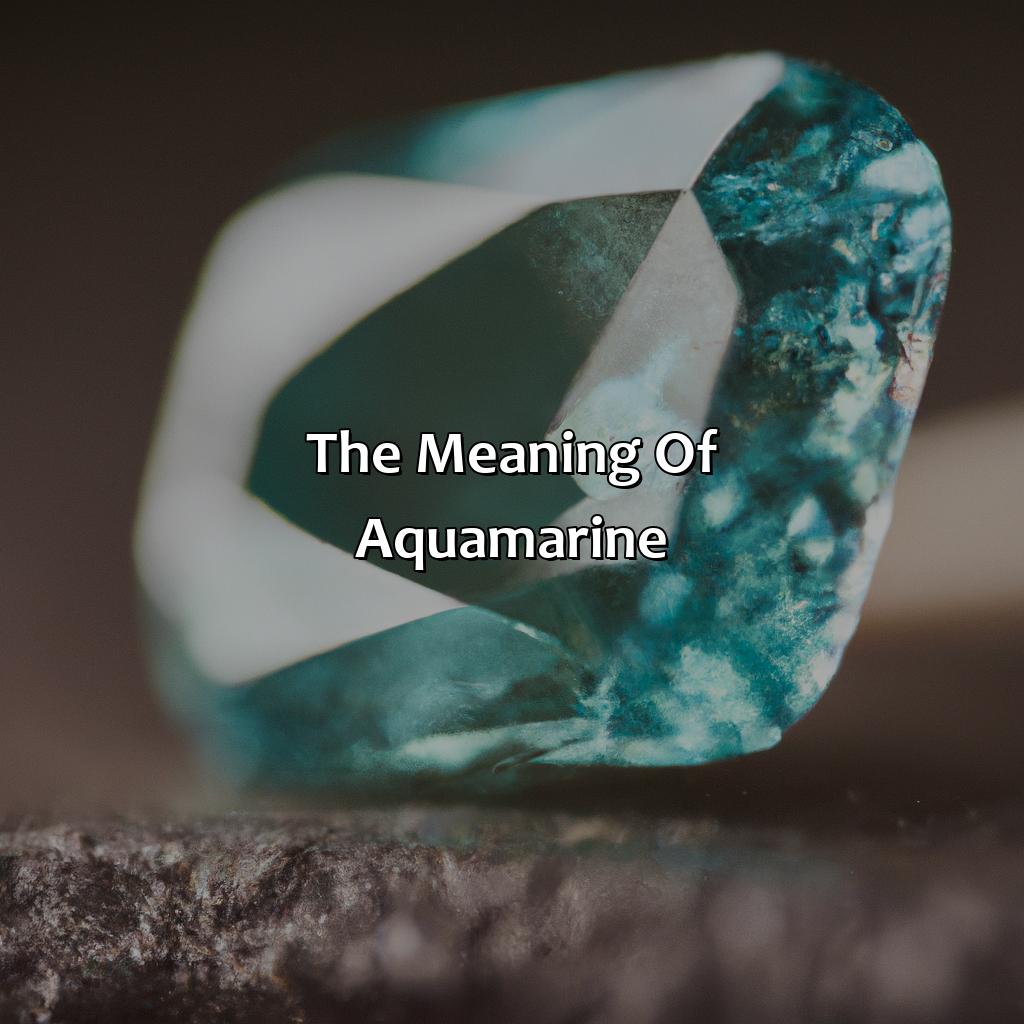
Photo Credits: colorscombo.com by Matthew Rivera
To grasp the hidden significance of aquamarine, delve into its spiritual and cultural significance. Have a look at how it can aid in chakra healing. Unearth the symbolism and historical importance connected to aquamarine in various cultures and religions. For instance, it is a birthstone and a part of religious jewelry.
Spiritual and metaphysical properties
Aquamarine has been considered a spiritual stone since ancient times due to its association with the throat chakra and communication. The gemstone is believed to enhance clarity of thought, aid self-expression, and promote emotional balance. In gemstone lore, aquamarine is said to be a symbol of friendship and love.
Furthermore, the metaphysical properties of aquamarine have been used for chakra healing as it aligns with the throat chakra and is believed to help regulate energy flow. It has also been associated with psychic development and meditation practices. Aquamarine is regarded as one of the most potent stones for calming anxiety, promoting inner peace and meditation.
In addition, according to gemstone lore, aquamarine was once carried by sailors as a talisman for protection on long journeys at sea. Its unique vibrant blue color was thought to offer protection from dangers such as sea monsters or shipwrecks.
Therefore, experts suggest that wearing an aquamarine can promote serenity, courage, clarity in communication while aiding in personal growth. Incorporating this spiritual stone into one’s daily practice can bring forth many benefits related to emotional intelligence and understanding.
To optimize spiritual and metaphysical properties of this gemstone regularly cleanse it under running water or sunlight. In addition, carry it in a pouch made from natural fabric like cotton or silk or place it in your space that aligns with your intentions for using it.
Aquamarine – the perfect gemstone for the mermaid who has everything.
Symbolism in various cultures and religions
Aquamarine holds significant gemstone symbolism in various cultures and religions for centuries. It represents truth, faithfulness, loyalty, and courage. In ancient times, it was believed to protect sailors and help them find their way back home safely. In Christianity, it is associated with the Virgin Mary and spiritual purity. The Hindu religion believes aquamarine promotes calmness and aiding communication. Birthstone jewelry also includes aquamarine for people born in March, symbolizing serenity and happiness. Religious significance includes having important roles in various biblical stories as well as being revered in Buddhism for allowing self-expression and creativity without fear.
Aquamarine has a special place in different faiths thanks to its subtle power source and ability to convey different messages depending on one’s culture or beliefs.
Interestingly, aquamarines were used by the Romans 2000 years ago as eyeglasses because they were transparent enough to see through. Even though it’s named after the sea, aquamarine comes in many different shades, from pale blue to vibrant cyan.
The Color of Aquamarine
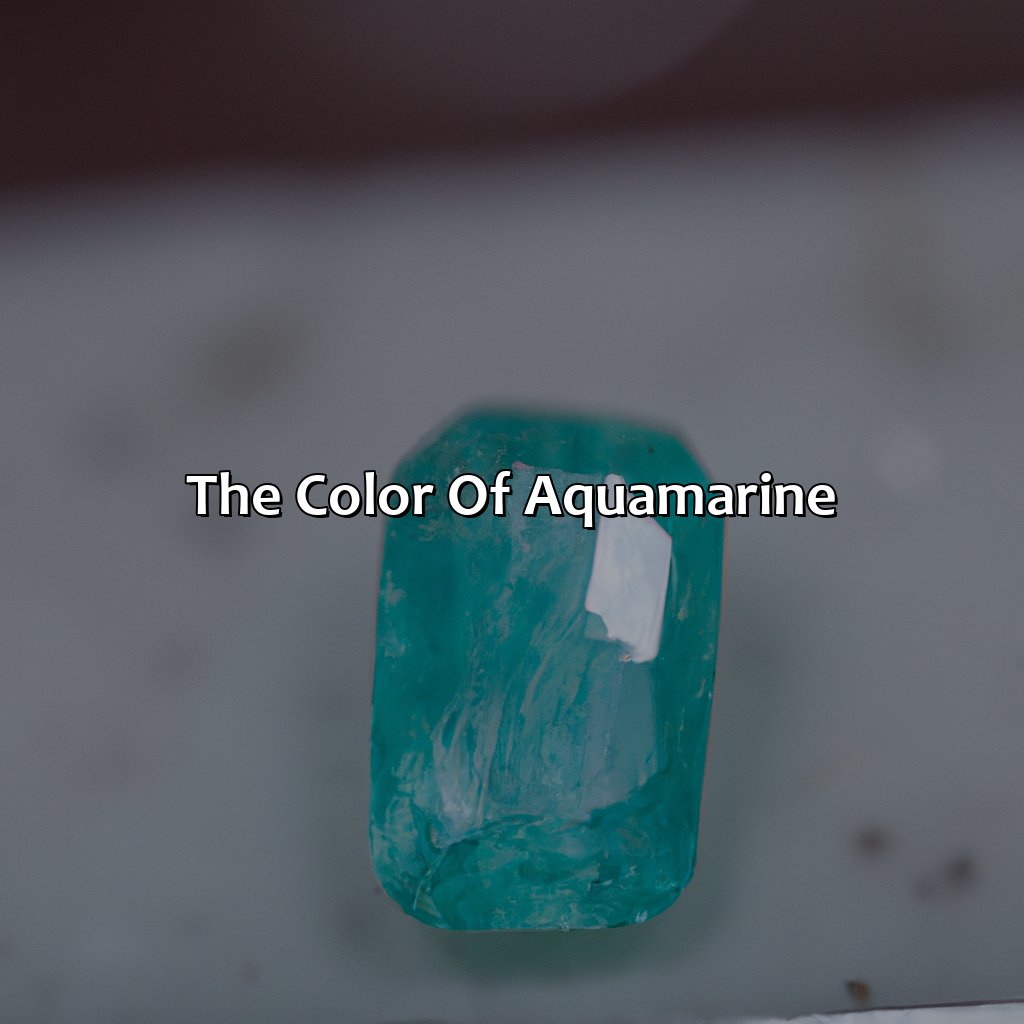
Photo Credits: colorscombo.com by Henry Adams
Want to know the color of aquamarine? Check out its shades and hues! There are pale blue-green, ocean hues, pale turquoise, seafoam green, and reef blue. Its color may change based on the light and surroundings. From a blue-green gemstone to water color, mermaid stone, and calming color, aquamarine is a beautiful gemstone.
Shade and hue
Aquamarine’s color ranges from a pale blue-green to a deeper ocean hue. Its shade and hue make it stand apart from other gems. Depending on the light and surrounding environment, its tones can vary from a pale turquoise to seafoam green or even reef blue. The unique color is one of the most appreciated features of aquamarine, making it popular in jewelry designs. In fact, gemstone experts praise the rarity of the distinct tone present in high-quality aquamarine stones. A true fact is that an extraordinary 10ct Brazilian stone sold at Christie’s for $4,089,800 in May 2014.
Like a chameleon, aquamarine shifts from a tranquil water color to a bold blue-green gem, earning its nickname as the mermaid stone.
Variations in color based on light and surroundings
Aquamarine exhibits variations in color as a result of changes in surrounding light and environment. The play of light, particularly under natural daylight, can create different hues that range from greenish-blue to blue-green shades. The stone’s water-like appearance creates a calming effect, hence the nickname “mermaid stone.” Its hue is best appreciated when viewed in natural light or against a neutral background. These characteristics make aquamarine a popular choice for jewelry designers seeking to add an elegant touch with calming color shades.
Aquamarine has a rich history dating back to ancient times, and is still used today in modern jewelry and fashion.
The History and Use of Aquamarine

Photo Credits: colorscombo.com by David Harris
To grasp aquamarine’s historical and contemporary uses, delve into “The History and Use of Aquamarine”. It has two subsections:
- Historical significance and notable uses
- Contemporary uses in jewelry and fashion
Notable uses include aquamarine engagement rings and turquoise gemstones. Contemporary uses consist of ocean-inspired jewelry and aquamarine birthstone jewelry.
Historical significance and notable uses
Aquamarine has a rich gemstone history, including notable uses that have significantly impacted various cultures.
| Aquamarine was used as a symbol of courage by ancient Greeks and Romans. |
| In the Middle Ages, aquamarine was believed to have healing properties that could cure ailments and ward off evil spirits. |
| The largest cut aquamarine, known as Dom Pedro’s Aquamarine, was crafted into an obelisk shape and weighs approximately 243 pounds. |
Unique details about aquamarine include its use in creating beautiful aquamarine engagement rings and its close resemblance to turquoise gemstone.
Did you know that during the Art Deco period in the 1920s and ’30s, aquamarine engagement rings were a popular choice due to their stunning blue-green hue?
Moreover, turquoise gemstone has been intentionally or unintentionally mistaken for aquamarine at times due to their similarity in color and appearance.
An interesting fact about this precious stone is that it was first documented by Pliny the Elder who named it after the Latin word “aqua marina” which translates to “sea water“.
Add some oceanic flair to your jewelry collection with stunning aquamarine birthstone pieces and ocean-inspired gemstone jewelry.
Contemporary uses in jewelry and fashion
Aquamarine’s popularity in contemporary gemstone jewelry and collections has increased due to its soothing blue-green color, which is reminiscent of the ocean. The gemstone’s transparency and clarity make it a perfect centerpiece for minimalist designs or as an accent stone for bolder pieces of jewelry. Aquamarine birthstone jewelry is also a popular option for those born in March, as well as those who appreciate the stone’s spiritual and metaphysical properties. Additionally, designers have been inspired by ocean-themed motifs and use aquamarine to represent the beauty of the sea in their ocean-inspired jewelry.
One unique detail about contemporary uses of aquamarine in jewelry and fashion is its increasing popularity in men’s accessories. The stone has been seen in cufflinks, tie pins, and other masculine accessories, adding elegance and sophistication to any outfit.
According to Forbes.com, “In recent years aquamarines (and other colored gemstones) have graced red carpets as frequently as diamonds.” This statement emphasizes how influential aquamarine has become in modern fashion trends, proving that it can rival even the most precious diamonds with its beauty.
The gemstone’s versatility allows it to be incorporated into various styles of jewelry ranging from classic to modern, truly making it one of a kind. As the world transitions towards appreciating natural elements more than ever before, ocean-inspired aquamarine jewelry is becoming more prominent than ever before.
Aquamarine: high value, low rarity, and a perfect excuse for splurging on something blue.
Value and Rarity of Aquamarine
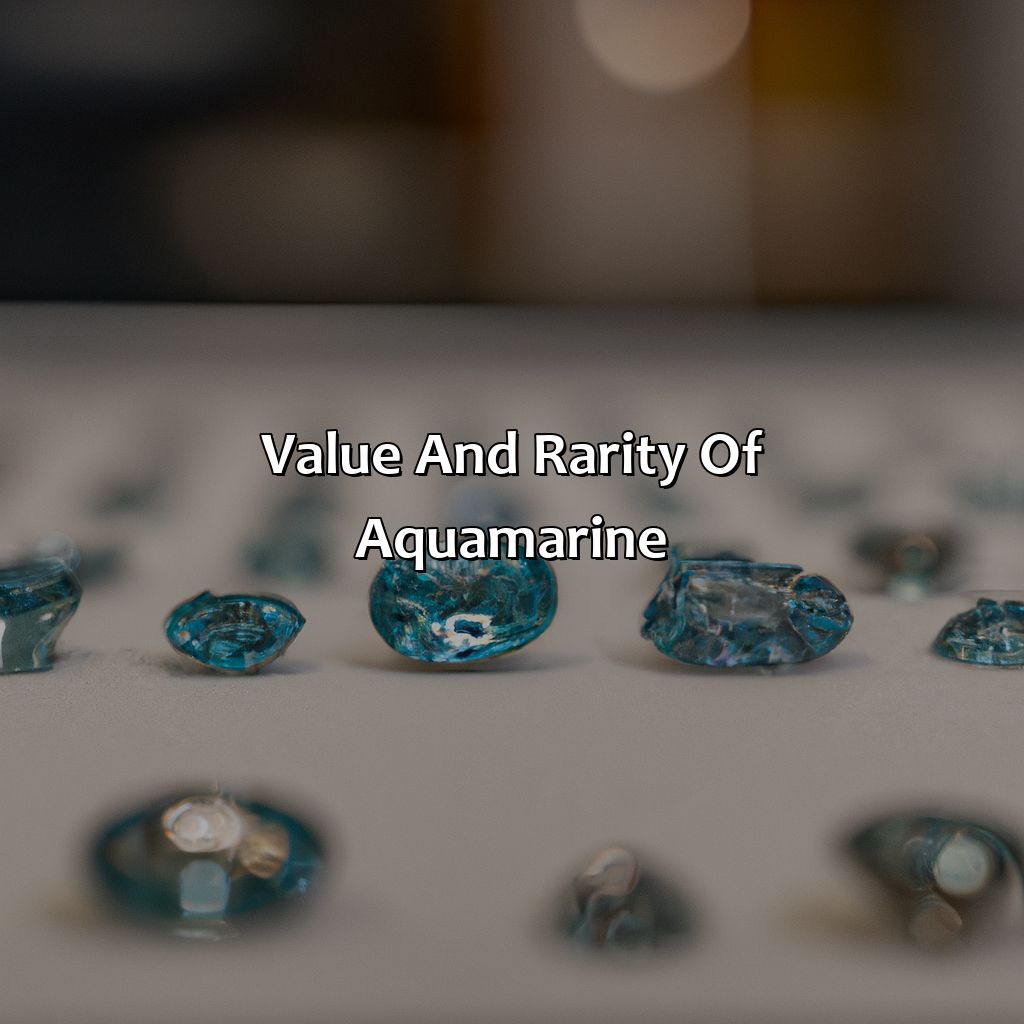
Photo Credits: colorscombo.com by Anthony White
To get the worth of aquamarine gemstones, you must account for several variables. Assess characteristics like cut and clarity to comprehend their value. Comparing aquamarine with other gemstones will help you understand its rarity and cost. Thus, it will be simpler to do a gemstone comparison.
Factors that impact the value of aquamarine
The worth of aquamarine is influenced by various factors, including its cut and clarity. The value of a high-quality aquamarine varies based on its size and intensity of color. In addition to this, the gemstone must be free from flaws and chips to command a higher price-tag. Gemstone value is also impacted by market demand and supply fluctuations. A rare yet aesthetic aquamarine could be prized higher than a larger stone with minor impurities since scarcity plays an important role in determining the worth of precious gemstones. As gemstone cut influences how light reflects within it, a well-cut aquamarine will often be priced higher than one that is not as well-proportioned or polished. Similarly, a flawlessly clear gem will have exceptional brilliance when compared to its imperfect counterparts and thus may hold more value in the market.
When purchasing aquamarines, buyers must consider that larger stones are generally rarer and harder to find than smaller ones leading to increased prices for bigger cuts. However, the color intensity plays an equally vital role in evaluating their worth since intense blue shades are far more valued than lighter greenish-blue hues. It’s essential to buy from reputable dealers who can provide certifications verifying authenticity as emulators are becoming more common in markets.
Gemstone value is not solely determined by color but rather intricate combinations of several factors such as rarity, clarity, cut quality, etc which interact with each other resulting in unique values for different specimens. Therefore several professional appraisals may enable potential buyers to find true valuation estimates.
Aquamarine purity comes with price tags because the higher the level of transparency or clarity; however lower clarity levels might sometimes have beneficial effects like adularescence which creates intriguing reflections within and enhances gem beautification at different angles helping increase their desirability value amongst gem lovers.
Move over diamonds, there’s a new rare gemstone in town – aquamarine holds its own in the world of precious gems.
Comparison to other types of gemstones in terms of rarity and cost
Aquamarine’s value and rarity can be analyzed comparatively with other gemstones. This analysis involves examining both the rarity and cost of a gemstone. In terms of rarity, aquamarine falls in the middle range alongside other gemstones such as amethyst, citrine, and peridot. However, it is more affordable compared to other rare gems like emerald, ruby, and sapphire.
The table below shows a comparison of popular gemstones based on their rarity and cost:
| Gemstone | Rarity | Cost |
|---|---|---|
| Aquamarine | Moderate | Affordable |
| Amethyst | Moderate | Affordable |
| Citrine | Moderate | Affordable |
| Peridot | Moderate | Affordable |
| Emerald | Rare | Expensive |
| Ruby | Rare | Expensive |
| Sapphire | Rare | Expensive |
As seen from the table above, aquamarine has moderate rarity and an affordable price tag compared to other rare gemstones. Its comparative gemstone analysis shows that its affordability makes it an attractive option for jewelry designers seeking precious yet affordable options.
Pro tip: Ensure you obtain a certificate of authenticity when buying any precious gemstone to guarantee its quality.
Don’t let your aquamarine become a fish out of water – follow these care tips to keep it sparkling!
Caring for Aquamarine
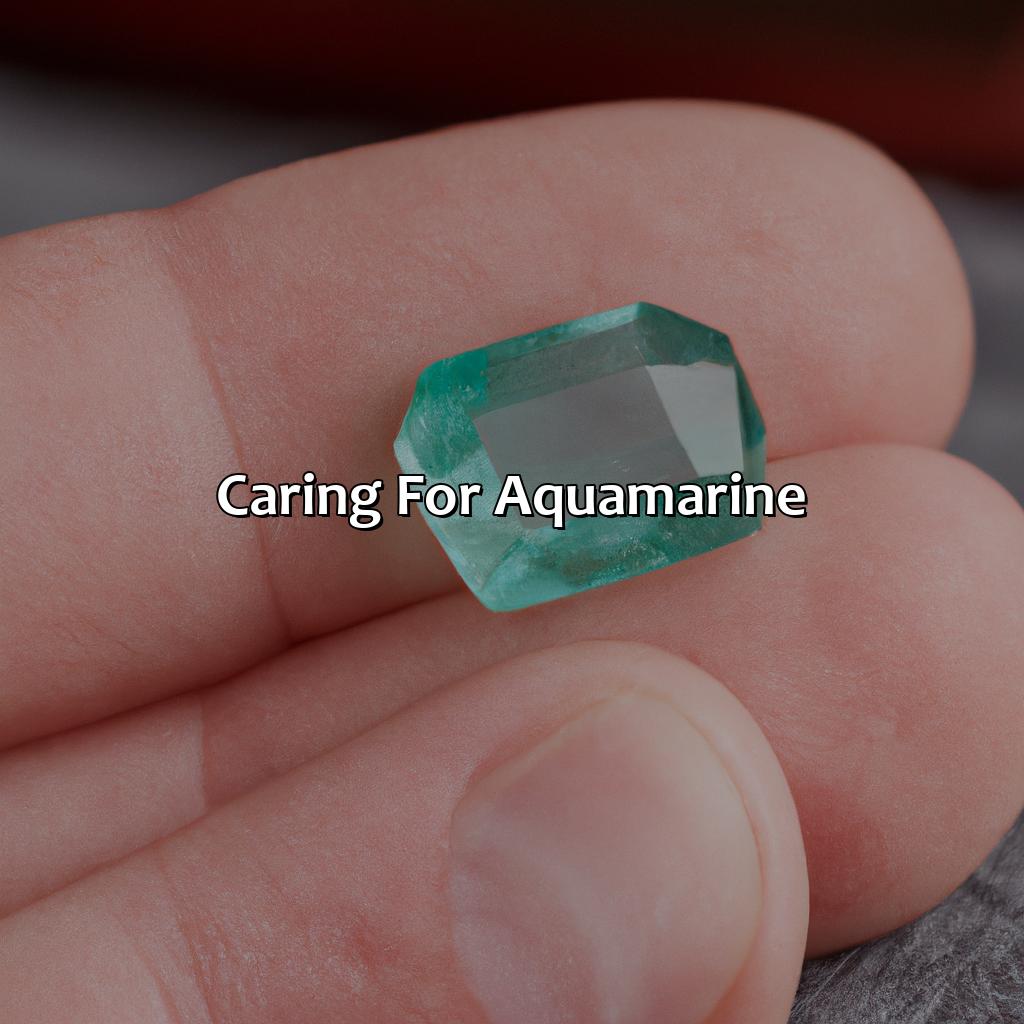
Photo Credits: colorscombo.com by Bryan Lopez
Want to take care of your aquamarine gemstones? You need to know the maintenance tips. Cleaning, storage, and handling – that’s the answer! Learn how to clean and maintain them. Plus, get tips on storing and handling them to keep their beauty.
Cleaning and maintenance tips
To ensure your aquamarine gemstone keeps looking its best, it is crucial to practice proper gemstone cleaning and maintenance. Here are some tips to keep your aquamarine shining bright:
- Use a soft-bristled brush and lukewarm water with a mild soap to clean the stone.
- Avoid using harsh chemicals or ultrasonic cleaners as they can damage the gemstone.
- Dry the stone gently with a soft cloth after cleaning to prevent scratching or damage.
- Avoid wearing your aquamarine during physical activities such as sports or exercise, as the stone is relatively fragile and can be easily chipped or scratched.
- Store your gemstones separately in a soft pouch or fabric-lined box to prevent them from rubbing against other jewelry or surfaces that can cause harm.
- Visit a professional jeweler for regular inspections and thorough cleanings to maintain the brilliance of your precious aquamarine over time.
Proper gemstone cleaning and maintenance not only ensures longevity but also preserves the value of aquamarine. Protecting your investment is important, especially when it comes to rare gems like this one.
It is important not to use ordinary household cleaners on your aquamarine jewelry. Gemstone cleaning solutions are designed specifically for delicate stones so always check if you have the right product first before starting any cleaning process.
Once, a woman came into a shop asking for help with her old family ring that had an Aquamarine center stone. The ring was full of dirt making it quite dull-looking. After inspecting the ring, it had been determined that there were no cracks on the Aquamarine but just dirt buildup around it; standard Gemstone Cleaning techniques did wonders for bringing back its beauty!
Store your aquamarine gemstones separately to prevent scratches and avoid exposing them to extreme temperatures or chemicals in daily handling.
Storage and handling recommendations
Proper Handling and Storage of Aquamarine
To ensure the longevity and beauty of aquamarine gemstones, it is essential to properly handle and store them. This involves taking precautionary measures that help protect them from damage, discoloration, or loss.
- Store your aquamarine jewelry in a separate container or compartment to avoid scratching or rubbing against other items.
- Avoid exposing your aquamarine gemstones to sunlight for prolonged periods as UV radiation can fade the color and dampen their luster.
- It is best to remove your aquamarine jewelry when doing household chores, sports or activities that could expose them to abrasions or impact damage.
- In case of necessary cleaning, always use a soft-bristled brush with mild soap. Avoid steam cleaning processes as they could cause fractures on the gemstones’ surface.
Gemstone handling and storage are crucial factors in maintaining their quality hence following these recommendations will ensure that your aquamarine gems remain as beautiful as they were when you acquired them.
Remember that proper care adds value to these prized possessions. Wrap up with a splash of aquamarine brilliance – summary of key points and gemstone benefits:
- Proper storage and handling prevent damage, discoloration and loss of the aquamarine gemstones.
- Avoid direct sunlight to protect gemstone color and luster.
- Keep the gemstones away from activities that can cause impact damage.
- Clean with a soft-bristled brush
- Aquamarine – the beautiful blue stone is not only perfect for March birthstone but also represents friendship, trust, and harmony.
Summary of key points
Aquamarine is a blue-green variety of the mineral beryl, known for its hardness, clarity and brilliance. The spiritual and metaphysical attributes associated with aquamarine are peace, tranquility, intuition, courage and communication. It symbolizes fidelity, honesty and loyalty in various cultures and religions. Shade and hue may vary from faint blue to rich greenish-blue with variations based on surrounding light conditions. Historical significance includes use as a talisman against dangers at sea by sailors during ancient times, while now it has become popular in fashion jewelry due to its rarity and beauty.
Aquamarine properties have unique value determined by four Cs – color, clarity, cut and carat weight – which contributes to its market price compared to other gemstones like sapphires or diamonds. Careful cleaning and maintenance will enhance its lifespan when stored appropriately away from heat or sunlight.
- – Spiritual meanings include peace, tranquility, intuition courage
- – Symbolizes fidelity, honesty and loyalty in multiple cultures
- – Shade varies from faint blue to rich greenish-blue
- – Historical significance includes use by sailors as protection talisman against dangers at sea
- – Rarity of the stone impacts the value considered in the 4 ‘c’s [color clarity cut carat]
- – Caring for it requires care for sun damage or heat damage
Aquamarine colors span across more than just blues but also greens that make it an alluring choice for jewelry owners who want an uncommon semi-precious gemstone to invest their money in- especially if they enjoy collections that tell stories through gemstones’ history itself.
Final thoughts on aquamarine
Aquamarine is a valuable and exquisite gemstone with a rich history and spiritual significance. Its unique color represents peace, harmony, and trust which makes it an ideal choice for gemstone therapy. The stone of serenity helps in calming the mind as it radiates positive energy and is known to be a favorable gemstone for those who seek protection while traveling by water.
In terms of value, aquamarine’s worth can vary based on its size, quality, and color. This gemstone is relatively rare compared to other popular stones such as diamonds or rubies. In contemporary times, Aquamarine is used frequently in jewelry and fashion because of its unique composition and complexion.
It’s important to handle Aquamarine with care so that it maintains its natural shine over time. It’s recommended that you clean the stone gently with mild soap or cleaner to prevent any damage from chemicals or scratches. Proper storage plays an important role in keeping the aquamarine jewel intact.
Some Facts About Aquamarine:
- ✅ Aquamarine is a blue-green variety of the mineral beryl. (Source: Geology.com)
- ✅ The gemstone is named for its resemblance to the color of seawater. (Source: GIA)
- ✅ The largest aquamarine ever found weighed over 110 kilograms and was discovered in Brazil in 1910. (Source: Smithsonian Magazine)
- ✅ Aquamarine has been prized for centuries for its supposed healing properties, which include reducing anxiety and promoting emotional balance. (Source: Crystal Vaults)
- ✅ The birthstone for the month of March is aquamarine. (Source: American Gem Society)
FAQs about What Color Is Aquamarine
What color is aquamarine?
Aquamarine is a blue-green color, reminiscent of the color of the ocean or a crystal-clear pool. It is a type of beryl mineral, similar to emerald and morganite.
Is aquamarine a popular gemstone?
Yes, aquamarine is a highly popular gemstone because of its unique color and durability. It is frequently used in jewelry, particularly in engagement rings and other types of fine jewelry.
What are the different shades of aquamarine?
Aquamarine can come in many different shades of blue-green, ranging from pale, almost colorless hues to deeper, more intense colors. Some aquamarines may even have a slight bluish-gray tint.
How is aquamarine formed?
Aquamarine is formed in the earth’s crust through a process that involves the interaction of magma and water. It typically forms in pegmatite veins and is often found in granitic rocks and other types of igneous formations.
Is aquamarine a birthstone?
Yes, aquamarine is the birthstone for the month of March. It is also associated with the zodiac sign of Pisces, and is said to have many spiritual and metaphysical properties.
How should I care for my aquamarine jewelry?
Because aquamarine is a durable gemstone, it is relatively easy to care for. You can clean it using mild soap and warm water, and it should be stored in a soft pouch or cloth to prevent damage or scratching. Avoid exposing your aquamarine jewelry to harsh chemicals or extreme heat, as this can damage the stone.

